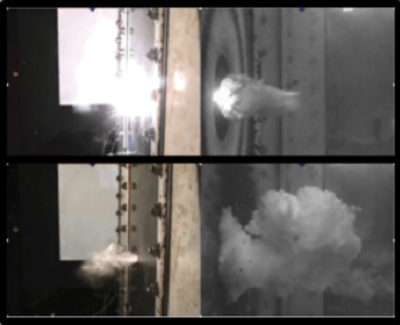Apollo anniversary inspires more exploration and milestones
By AMIR S. GOHARDANI|December 2019
The Society and Aerospace Technology Outreach Committee promotes the transfer and use of aerospace technology for the benefit of society.
This year saw important milestones and aerospace endeavors, and among the most inspiring events were those celebrating the 50th anniversary of Apollo 11’s historic moon landing. The mission that put humans on the lunar surface for the first time undoubtedly inspired thousands of engineers and scientists over the years and may have helped revive our quest to explore our solar system.
Commander Neil Armstrong and lunar module pilot Buzz Aldrin formed the American crew that landed the Apollo Lunar Module Eagle on July 20, 1969, and on July 20, 2019, NASA and Vice President Mike Pence marked the anniversary by restating the White House’s plan to return humans to the moon by 2024.
While the primary goal of NASA’s new program, dubbed Artemis, is to land the first woman and next man on the lunar surface by 2024, a secondary objective for NASA is to collaborate with commercial and international partners to establish sustainable exploration by 2028. Success in missions such as Artemis would allow for future crewed missions to Mars.
Meanwhile, progress was made this year on the Mars 2020 rover, an important deep-space mission whose launch window is scheduled to open in July 2020. The rover is part of a long-term effort of robotic exploration of the red planet, and NASA’s Jet Propulsion Laboratory in California announced in October that for the first time the vehicle had carried its full weight on its legs and wheels.
This year also recorded one of the busiest days in aviation history. According to Flightradar24, a real-time, air-traffic tracking service, 230,408 flights took to the skies on July 24. Excluding certain sensitive air traffic, such as military flights, this figure represented nearly every trackable aircraft in the world, including private jets, gliders, sightseeing flights, helicopters, personal aircraft, commercial passenger flights and cargo planes. To put the number in perspective, the greatest number of flights recorded in 2017 was 190,003 on Aug. 24. Each year’s low typically occurs on Dec. 25; 101,511 flights were recorded on Christmas Day in 2017.
In the quest for further space exploration, artificial intelligence identified two new “Super-Earths” in May. The machine-learning algorithm called AstroNet-K2, a neural network modified to hunt through data from NASA’s Kepler space telescope, spotted the two planets, named K2-293b and K2-294b. Implementing the deep-learning algorithm capable of separating real exoplanet signals from false positives, K2-293b is about 2.5 times as big around as Earth, while K2-294b is 1.7 times as big around. These planets orbit a star about 1,300 and 1,200 light-years away, respectively.
In October, two astronauts carried out the first all-female spacewalk. After postponing an earlier all-female walk in March due to unavailability of spacesuits that fit both female astronauts, NASA made history by sending Christina Koch and Jessica Meir outside the International Space Station to replace a power controller. The walk lasted seven hours and 17 minutes.



































